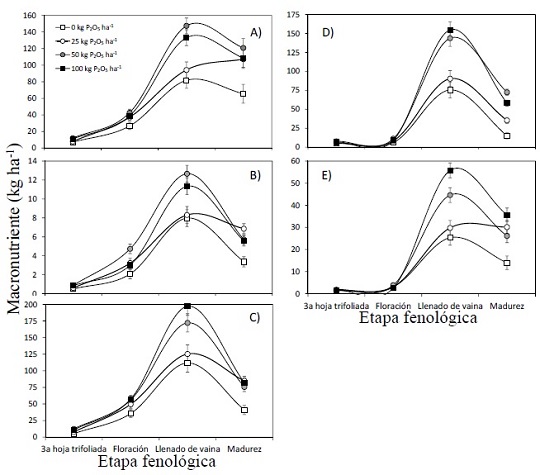Role of Bacillus subtilis and phosphorus doses on macronutrient concentration, partitioning and uptake of common bean
DOI:
https://doi.org/10.28940/terra.v41i0.1056Keywords:
biomass, growth, phenology, reproductive organs, vegetative organsAbstract
Knowledge on macronutrient uptake and distribution is highly relevant in fertilization management programs of common bean crop (Phaseolus vulgaris L.). In this regard, the use of plant growth promoting rhizobacteria (PGPR) in combination with phosphorus fertilization could exert a synergistic ef fect and potentiate the process of uptake and distribution of nutrients on this crop. A field experiment was established to investigate the response of the common bean crop to four phosphorus (P) doses, (0, 25, 50, 100 kg ha-1 P2O5) and the strain Bacillus subtilis Q11 (Bs) (seed inoculation and a control without inoculation) on macronutrient concentration, distribution and accumulation. The experiment was arranged under a split plot in a randomized complete block design with three replicates. According to our results, the P doses and the inoculation process af fected biomass accumulation individually. The highest biomass accumulation was obtained with P doses >50 kg ha‑1; whereas inoculation with Bs produced higher biomass compared to the control. The interaction P × Bs af fected significantly the concentration of nitrogen, phosphorus, potassium, calcium and magnesium in dif ferent plant organs in all stages of growth, except for pods during the grain filling stage. The nutrient uptake pattern exhibited a sigmoid curve and was individually modified by the P doses and Bs inoculation. The 50 kg ha-1 P dose increased macronutrient accumulation, especially during grain filling; while the inoculation with Bs enhanced the uptake process during grain filling and physiological maturity stages. In conclusion, combining Bs and P doses inflicts positive ef fects over the modification of concentration, uptake and macronutrient accumulation in common bean crop.
Downloads
Publication Facts
Reviewer profiles N/A
Author statements
- Academic society
- Terra Latinoamericana
- Publisher
- Mexican Society of Soil Science, C.A.

















